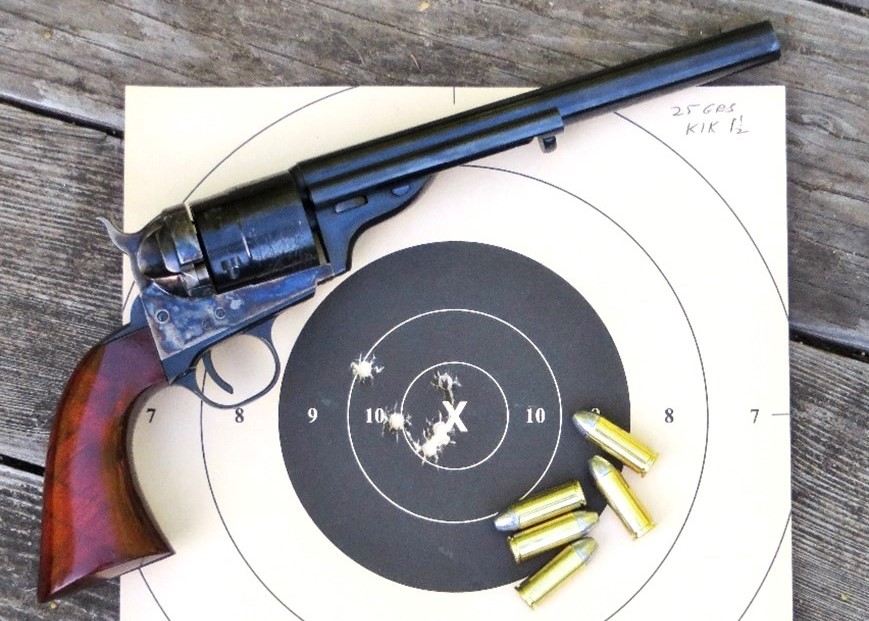
By Mike Nesbitt | Contributing Editor
In many of my stories about our Buffalo Camp, put on by the Black River Buffalo Runners at the Capitol City Rifle & Pistol Club near Olympia, Washington, where we shoot in smokey (black powder) competition with “buffalo guns,” then “camp guns,” and additionally with revolvers, I’ve certainly mentioned the black powder revolver match.
This time I want to talk about the trail that the revolver match is shot on, with more than just general descriptions of the targets. Considering the targets being used, the black powder revolver match is a true challenge, and, on top of that, it’s a whole lot of fun.
When we shoot this trail in competition it must be shot with revolvers using black powder loads. Yes, single shot muzzleloading pistols are acceptable, although in most of our shooters’ opinions, not as much fun. And, while getting a good score in competition is the main objective, we’ll take a look at these targets as if we’re shooting it for practice, where black powder loads are still preferred, with descriptions of the targets in the order that they’d be encountered by the shooters. Practice, of course, is just as difficult as during the match but for some reason shooting in a match adds a bit of nervousness which can spoil some shots.
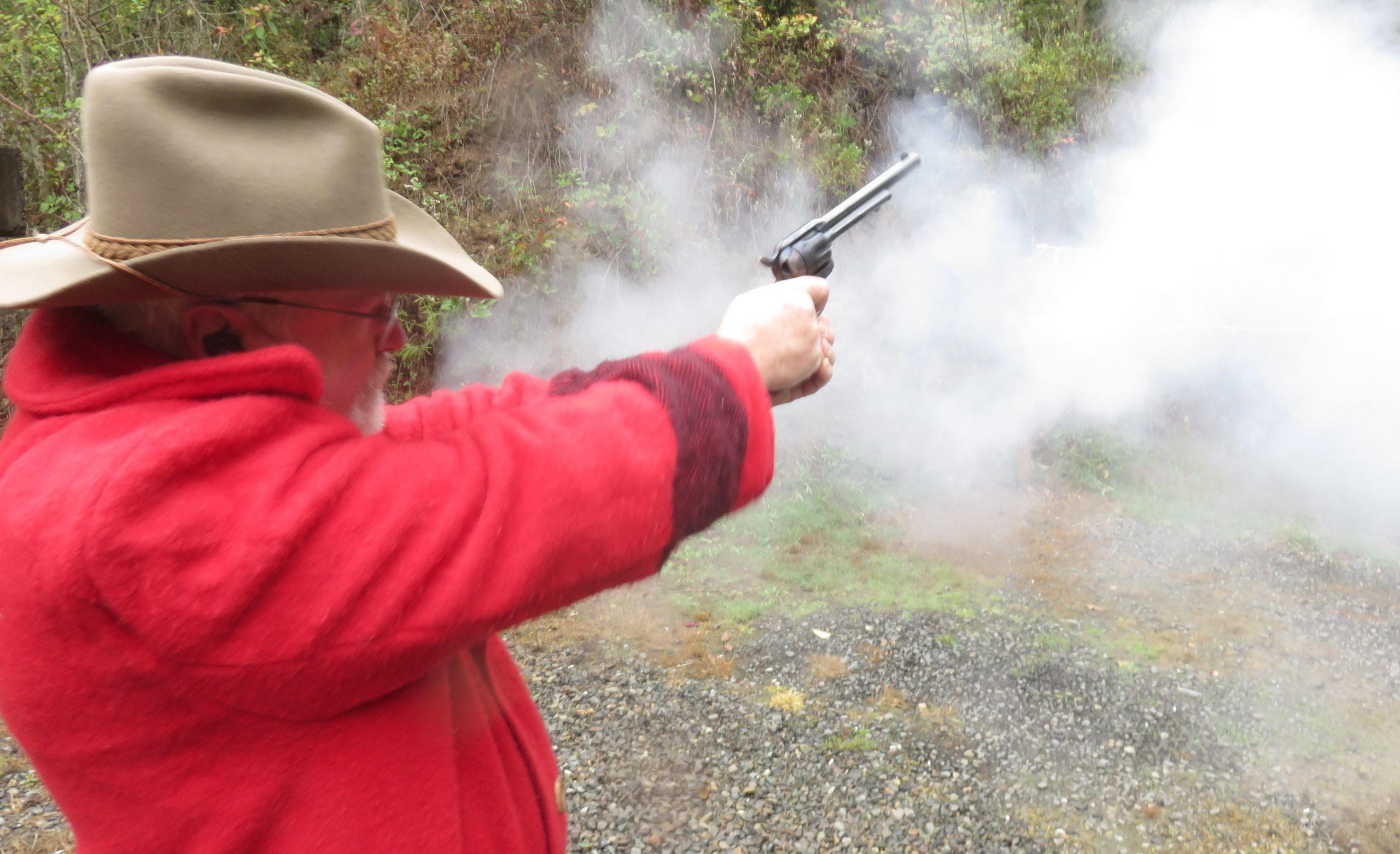
Before stepping “to the firing line,” let me mention my favorite revolvers for this trail.
The first gun I used was an Uberti copy of Colt Richards-Mason conversion of the 1860 Army, imported by Cimarron, chambered for the (updated) .44 Colt cartridge. The original .44 Colts used heeled outside lubricated bullets of about .451-inch diameter while the new updated cartridges use the more standard bullet diameter for .44s of .429 inch, which have lube grooves seated below the mouth of the cases, for inside lubrication. The load I favored in my 8-inch barreled gun used 21 grains of Olde Eynsford 2F powder under a 220-grain bullet.
Later my favorite became another Uberti replica, this time a copy of the Smith & Wesson No. 3 New Model in .44 Special, imported by Taylor’s & Company. I’ll be quick to add that this revolver is not being offered anymore and, in my opinion, it was one of the very best replica guns ever made. Why it was discontinued, I have no idea… And in mine I commonly shoot ammo loaded in .44 Russian cases, using 18½ grains of GOEX’s Olde Eynsford 2F powder under a 250-grain round nose bullet. That load is about four grains of powder less than the old black powder factory loads and I settled on that powder charge for its accuracy.
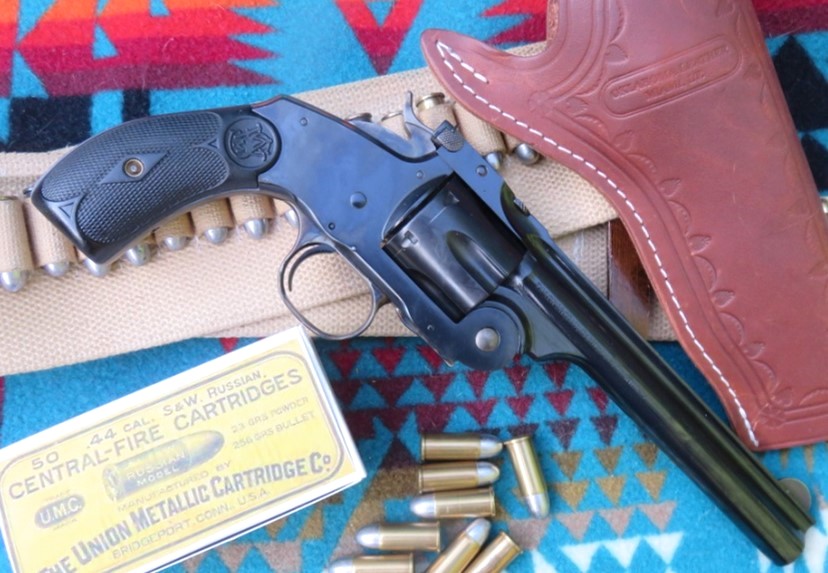
Also, just because we’re talking about revolvers, I have shot the trail with a copy of a Colt 1851 Navy in .36 caliber. Actually, I used my 5-inch barreled Navy on the trail, where several of the same targets are used, at our last muzzleloading event and my score was not too bad at all. The load fired in my gun used 22 grains of Schuetzen 2Fg black powder under a .375-inch round ball, which weighs only 80 grains. The .36 caliber percussion revolvers are very comfortable to shoot and I’d be glad to shoot that cap & ball Colt Navy on the trail again, in competition too.
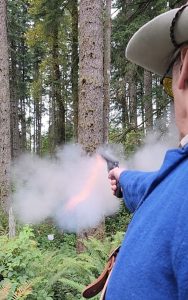
Other shooters use their favorites as well. Those can include the famous .44-40, still liked by several because it is also a popular cartridge in the lever action rifles. The .44 Special has a good following and others use the .38 Special with black powder loads, with one shooter using a copy of a Colt Walker. At last year’s Buffalo Camp, Mike Moran won the Black Powder Revolver Match with his Ruger Vaquero in .45 Colt caliber, getting hits on eight of the ten targets.
Okay, now it’s time to talk about the ten targets that make up the black powder revolver match. Let me begin by explaining that the trail, where these targets are arranged, is designed to be somewhat like a hunting situation. The targets are varying in size as well as in distance and none of those distances are known or displayed. This means the shooters must estimate the distances and use a sight picture that would be appropriate for the shot. Every distance is different and, likewise, no two targets are the same in size. This makes every shot an individual and sometimes there are rules to make it even harder.
The first target is a small oxygen bottle, empty of course, hanging vertically at a rather reasonable distance. Some shooters call this an easy target and, knock on wood, I usually do hit it myself. A good hit is rewarded with an easy to hear “clang” and the target swings from the bullet’s impact.
Next is a silhouette of a rabbit, made of steel. This is one of those targets where the rules make getting a good hit somewhat difficult. For this shot, in competition, a one-hand hold must be used. When it’s like that in competition, we’ll do it that way in practice too. The rabbit is somewhat farther away than the oxygen bottle and it is slightly downhill as well. It takes a steady shot to clobber this one.
Following the rabbit is a squirrel, also a steel silhouette, hanging in a tree. I don’t think this shot is as far as the rabbit but the squirrel is a smaller target. And shooters are allowed to use a two-hand hold again. That two-hand hold makes a difference and I believe more shooters hit the squirrel than the rabbit but both of those targets are very easy to miss.
The fourth target is another rabbit but this one is farther away. We use four targets in the revolver match that are also part of the “Meat Hunt” which is shot with rifles, so those four targets are shot at with both types of guns. A two-hand hold is almost a necessity, at least for me, and I tend to feel rather accomplished when I get a good hit on this rabbit.
After the second rabbit comes the crow and this is a pistol target only. It’s a little closer than the last rabbit but it is not as easy to see, due to surrounding brush and trees. Remember, this is supposed to simulate a hunting situation, even though some of our targets are not in the shape of animals, game animals or otherwise.
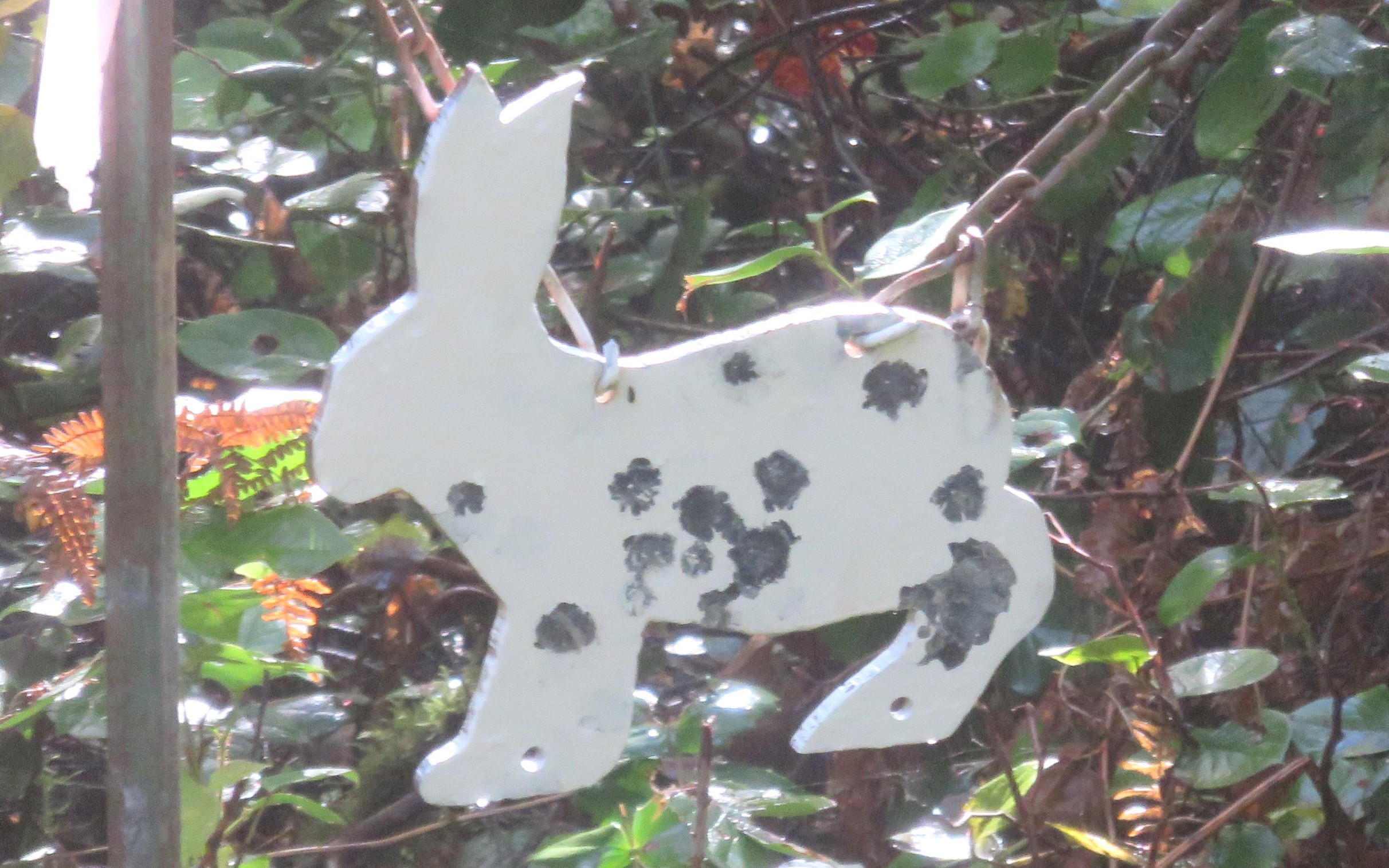
There, that takes care of five of the targets and for most of us using single action revolvers, it is also time to reload. Our rules for using black powder cartridge revolvers on this trail are the very same as when shooting with a percussion revolver. A holster is required. We generally arrive at the first target with empty guns. There we load our guns with either five or six rounds, fire a shot at the first target, then without pulling the hammer back or spinning the cylinder, slide the gun into the holster with the hammer still resting on the fired chamber. The revolver is not to be handled again until at the shooting station for the next target.
Those rules are necessary for safety because we’re usually shooting in small groups of perhaps five or six shooters, or even more. Of course, if the shooter had loaded the revolver with six rounds at the first target, then one more target could be fired at before reloading is needed and we do prefer that the revolver be totally emptied before reloading is done.
If the shooter is using a single shot pistol, then the gun isn’t to be loaded until arrival at the shooting station. Likewise, if that single shot pistol is a muzzleloader, the gun can be charged with powder and loaded with a patched round ball, but the gun won’t be capped or primed (which completes the loading) until at the next shooting station.
Those rules are simple and straightforward, and for shooting in groups they are just as necessary as any other safety rules of the range. They don’t present any problems or difficulties and they don’t interfere with the actual shooting at all.
Next is target #6, one of my favorites, a small circular disc which we call the “Mini Moon.” This target is rather close and, like the first rabbit, this must be shot at with a one-handed hold. There is a 5/8-inch or ¾-inch hole in the center of this disc and the last time I shot at this target I told my partner that I’d aim for that little hole. When I fired, shooting my .44 Russian, the target simply quivered a little bit. With a solid hit, that target swings wildly. So, I will claim that my shot went right through the hole, perhaps grazing the target slightly on the side of the hole. Some have suggested that the hole be taped over on the back to see…
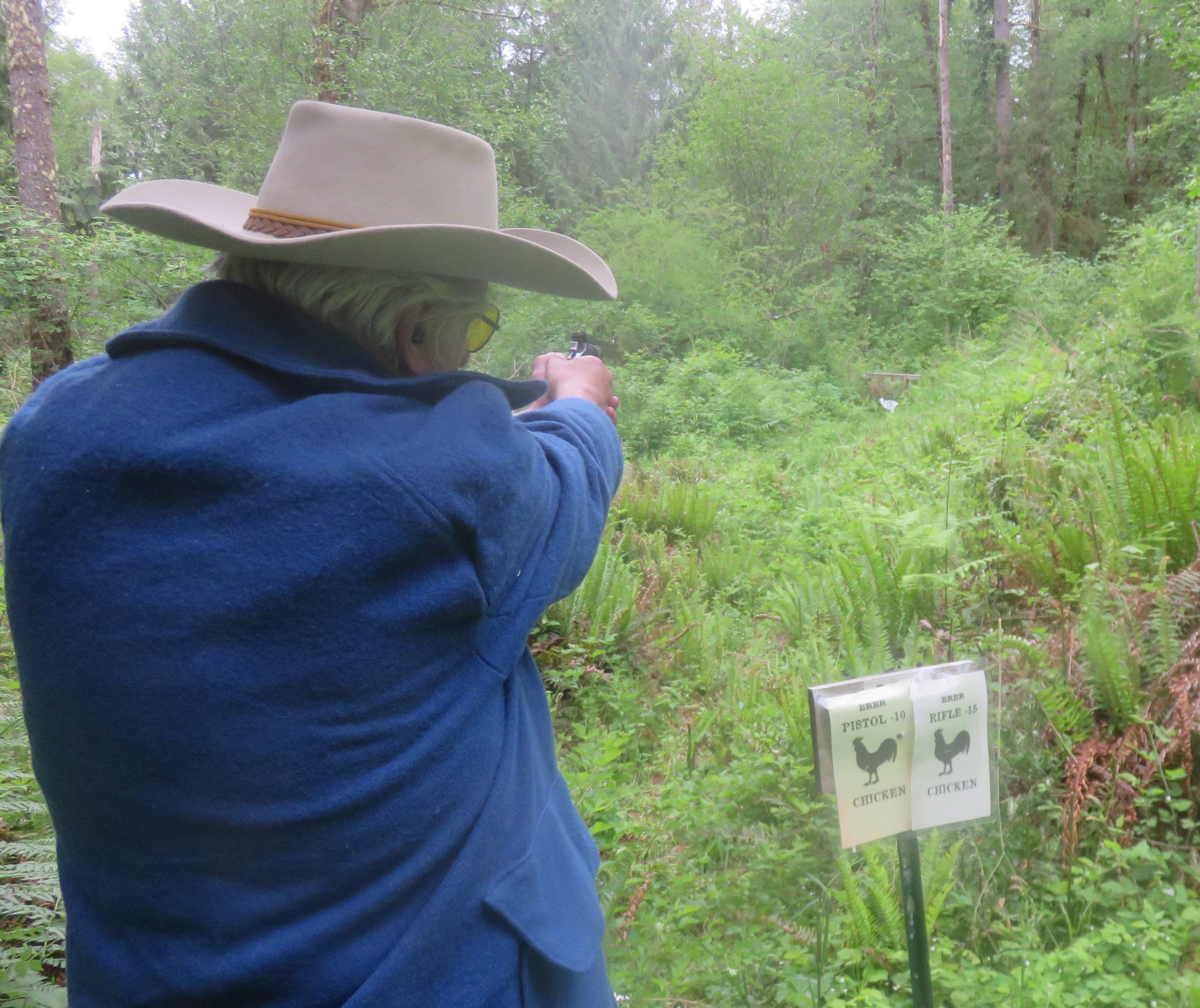
Target number 7 is another that is shot at by both rifles and revolvers, the antelope. This silhouette is downhill and the target is not as big as it sounds. Getting that hanging silhouette to swing takes a good revolver shot.
Target number 8 is one I’ve talked about before, the big bear which is on a hillside well over 50 yards away. I used to think this was an 80-yard shot but a club member with a range finder “scoped” it at a shorter distance. Not much shorter but I can’t suggest it to be an 80-yard shot anymore. That does not reduce its difficultly and recently I have missed that target almost a dozen shots in a row, and not all on the same day. However, my last shot at this target, with my S&W replica again, was a good hit. I believe I had been aiming too high. Too many times if you aim high, you shoot over the top. And the big bear is another target which is also on the “Meat Hunt” for our rifles, usually the lever-guns that we call our “camp guns.”
Then comes target #9, another circular “moon” but this one is much larger and also quite a bit further away. When used in a muzzleloading match, this is a Trade gun target, so it is larger than the usual rifle targets. With a revolver, shooting with a two-hand hold, this one gets hit with certain regularity and, again, the rewards of a good hit are the loud “clang” and seeing the target set to swinging by the bullet’s impact.
Just a few more steps bring us to target #10, the chicken. From my point of view, this is truly a hard-to-hit target. While shooting in competition, at our Buffalo Camps, it took me three years to get a hit on this one. I’d like to say that the chicken is out there about 35 yards but it actually shouldn’t be that far. And recently the target was replaced with an even smaller chicken, just to keep our shooters on their toes. Completing the black powder revolver trail with a hit on the chicken is always the best way to finish the course.
Those are the ten targets for our Black Powder Revolver Match, which is part of the “doin’s” at our annual Buffalo Camp. Yes, it has the taste of the Old West in it but this is not part of Cowboy Action shooting. And, perhaps to emphasize or rate the difficulty of those ten targets, in competition the course has only been aced one time. Now I’m trying to see if I can do it again.



